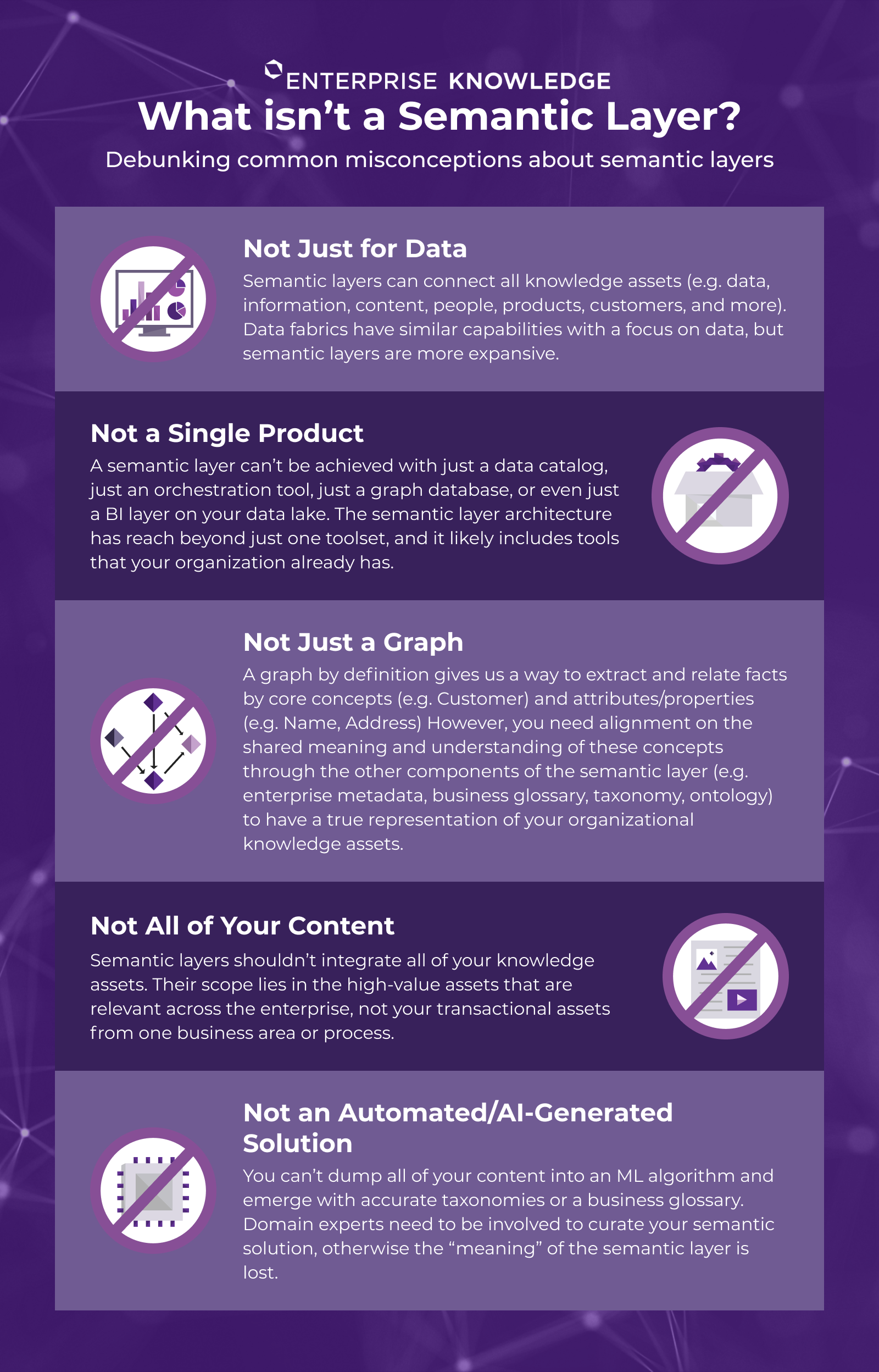Semantic layers allow organizations to embed context with their organizational data in a way that is systematically interoperable and intuitive to business users. With developments in data and AI, there is a compelling need (and opportunity) for semantic layer development, but that comes along with noise around what semantic layers are and what they offer. My colleague Lulit defined the semantic layer framework, its components, and a sample architecture in her blog “What is a Semantic Layer?”
To expand on the definition of a Semantic Layer, and moreover to eliminate the noise and confusion around them, I present to you what it is not. Debunking these misconceptions steers organizations from common detours or roadblocks when building semantic layers, such as:
- Vendor lock – expecting a silver bullet solution to provide the connectivity and interoperability that a componentized semantic layer offers;
- Lack of adoption – building out semantic solutions in a technology-driven silo with little interaction or ownership by the business; and
- Limited enterprise reach – restricting the domain to single departments or use cases.
While you should be wary of the misconceptions about Semantic Layers, their value as tangible solutions that are driving enterprise AI, reporting, search, and personalization initiatives couldn’t be more real. Starting small with a Semantic LLM Accelerator or a 2-day Semantic Architecture Workshop can help to show value quickly while building a foundation for future scale. If you’ve got foundational components and are looking to see how other organizations have achieved the Semantic Layer, check out our case studies or contact us with questions.

